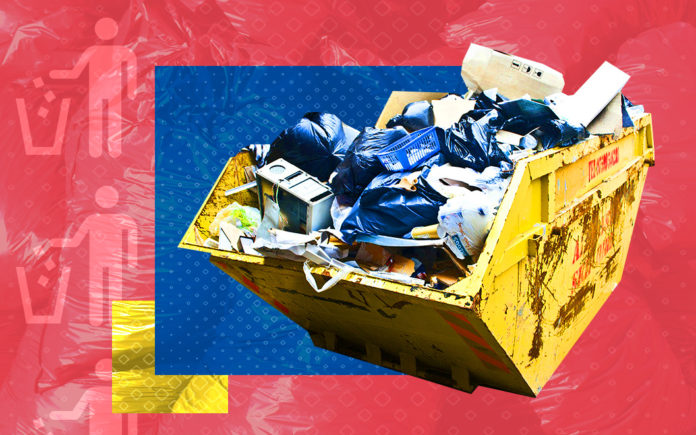

Smart Waste Management (Smart Waste Management)
IoT can maximize waste collection services, reduce city operating costs, and transform waste management into a data-driven collection process.

Waste collection is an important urban service, but existing waste management systems are often too resource-intensive, inefficient, and outdated. The Internet of Things (IoT) has the potential to maximize waste collection services and reduce city operating costs.
People produce a large amount of municipal solid waste every day, which is commonly referred to as garbage. Yet the basic waste collection systems in cities are often neglected until the bins are full and overflowing. As population growth and urbanization increase the total amount of waste produced in cities, urban waste collection operations must adapt accordingly to keep cities clean.
How are cities currently doing waste management?
In most existing waste management systems, municipal waste collection services operate on scheduled routes at regular intervals and empty rubbish and recycling bins regardless of whether they are full or not. This inherent characteristic of the system can lead to problems such as premature removal of half-full bins, unnecessary waste of fuel and overuse of city resources. As can be seen, the current manual collection method is resource intensive. But with the help of IoT, they can in turn be transformed into a data-driven collection process.
What is Smart Waste Management?
The smart waste management solution uses sensors placed in waste containers to measure fill levels and notify the city's collection service when bins need to be cleared. Over time, historical data collected by the sensors can be used to identify filling patterns, optimize driving routes and schedules, and reduce operating costs. The cost of these sensors is steadily dropping, making IoT litter bins easier to implement and more attractive to city leaders.
Existing smart waste management technologies
Senoneo is a smart waste management solutions provider. It produces two types of ultrasonic sensors capable of monitoring the fill level of litter bins of all types and sizes. The platform they designed can make reasonable assessments of bin fill levels, collection fleet sizes and distances to landfills, and help cities and businesses optimize waste collection routes. The supplier claims that their solution can reduce waste collection costs by at least 40% and urban carbon emissions by 60%.
The CleanCUBE, produced by eCube Laboratories, is a solar-powered waste compactor that can hold 8 times more waste than non-compressed bins. As waste builds up in the CleanCUBE, built-in sensors monitor the fill level of waste in real time and automatically activate the compression cycle when full. All the information collected by the sensors can be sent to the corresponding platform, and the mode of garbage collection can be detected through data analysis.
Smart Waste Management Practices
New York has one of the most complex waste management ecosystems in North America. It needs 7,200 garbage collectors and a lot of infrastructure to keep the city of about 8.6 million people on a sanitation mission. In Times Square alone, an estimated 500,000 people pass by each day and generate approximately 15,300 pounds of trash. In March 2013, a total of 30 Bigbelly smart waste recycling stations were deployed in Times Square as part of the largest public space recycling program in New York City. The Bigbelly unit features waste compaction, real-time fill level monitoring and notification collection. The Bigbelly smart station can increase the garbage capacity by nearly 200% and reduce the collection frequency of each garbage bin by 50%. Due to the great success of this project, the local municipal government expanded the deployment of smart stations to 197 later.
The city of Haig in the Netherlands has been installing underground bins since 2009 that can hold more waste. As of 2017, the city had installed 6,100 litter boxes beneath sidewalks, the tops of which rise above waist height. Around 3,500 of these devices feature sensor sensing, which allows waste managers to monitor container fill levels remotely and create "smart schedules" for emptying bins. The success of these underground bins earned them inclusion in the 2017 New York City Design Guidelines for Zero Waste report as an example of an innovative waste solution.
Author: Nadia Jamrozik
This article is from a translation. If you want to reprint, please obtain authorization from this site first.
